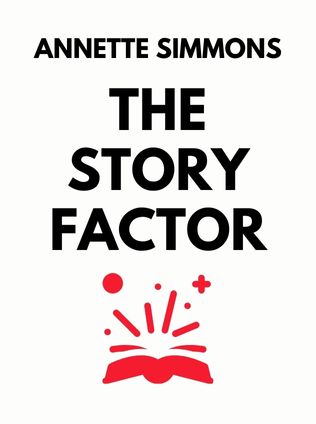
The Story Factor
Inspiration, Influence, and Persuasion through the Art of Storytelling
By Annette Simmons
Published 10/2019
About the Author
Annette Simmons is a renowned consultant and author, celebrated for her expertise in the power of storytelling within organizations. She is the founder of Group Process Consulting, specializing in fostering collaborative behaviors in various types of organizations. Simmons is also the author of Territorial Games and A Safe Place for Dangerous Truths. Her work is dedicated to helping organizations build trust, communicate effectively, and harness the power of stories to influence and inspire.
Main Idea
The central premise of The Story Factor: Inspiration, Influence, and Persuasion Through the Art of Storytelling is that storytelling is a fundamental tool for inspiring, influencing, and persuading others. Simmons argues that facts and figures alone are insufficient to move people; stories, on the other hand, have the power to connect on a human level, break through barriers, and create lasting impact. Through storytelling, one can build trust, convey values, and inspire action. The book explores six types of stories essential for effective communication and influence.
Table of Contents
- The Six Stories You Need to Know How to Tell
- What Is Story?
- What Story Can Do That Facts Can’t
- How to Tell a Good Story
- The Psychology of Story’s Influence
- Influencing the Unwilling, Unconcerned, or Unmotivated
- Story Listening as a Tool of Influence
The Six Stories You Need to Know How to Tell
Simmons identifies six crucial stories that every effective storyteller must master:
- "Who I Am" Stories: These stories reveal something essential about the storyteller’s character and values, helping to build trust with the audience. For example, a story about Mother Teresa that illustrates gratitude and humility can convey these traits about the storyteller.
- "Why I Am Here" Stories: These stories explain the storyteller’s intentions and motivations, reassuring the audience of their good intentions. A CEO should be transparent about personal gains to avoid suspicion.
- "The Vision" Stories: These stories paint a compelling picture of the future that the storyteller envisions, motivating the audience to share in that vision. An authentic and passionate vision story can transform current frustrations into hope for a better future.
- "Teaching" Stories: These stories are used to impart knowledge or skills, making the learning process more engaging and memorable. For example, a story about a skilled receptionist can teach new employees the essence of excellent customer service.
- "Values in Action" Stories: These stories illustrate the storyteller’s values in practice, demonstrating integrity, honesty, and other virtues. For instance, a story about an employee who admitted a mistake and gained trust highlights the value of integrity.
- "I Know What You Are Thinking" Stories: These stories address the audience’s potential objections and concerns upfront, building credibility and rapport. By anticipating and acknowledging the audience’s thoughts, the storyteller can disarm skepticism and resistance.
"People don’t want more information. They are up to their eyeballs in information. They want faith—faith in you, your goals, your success, in the story you tell." - Annette Simmons
"Who I Am" Stories
These stories are crucial for establishing trust and credibility. When you share a "Who I Am" story, you offer a glimpse into your character, values, and experiences. This helps the audience understand who you are beyond your title or role. For instance, sharing a story about overcoming a personal challenge can demonstrate resilience and determination. The key is authenticity; the story should genuinely reflect your true self.
- Sharing a personal experience of overcoming adversity.
- Recounting a moment that shaped your core values.
- Telling a story that highlights your empathy and understanding.
"Why I Am Here" Stories
These stories explain your motivations and intentions, addressing the audience’s unspoken question: "What’s in it for you?" Being transparent about your reasons for being there helps to build trust. For example, if a CEO speaks about a company merger, they should acknowledge both personal and organizational benefits to avoid seeming disingenuous.
Sign up for FREE and get access to 1,400+ books summaries.
You May Also Like
The Subtle Art of Not Giving a F*ck
A Counterintuitive Approach to Living a Good Life
By Mark MansonRich Dad Poor Dad
What the Rich Teach Their Kids About Money - That the Poor and Middle Class Do Not!
By Robert T. KiyosakiHow To Win Friends and Influence People
The All-Time Classic Manual Of People Skills
By Dale CarnegieQuiet: The Power of Introverts
The Power of Introverts in a World That Can't Stop Talking
By Susan Cain



















